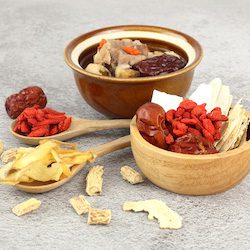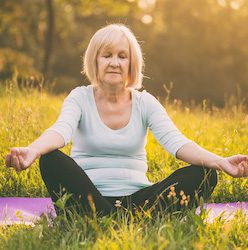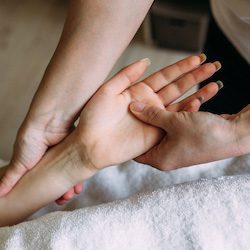Acupuncture FAQ
Acupuncture has been practiced in China and other parts of the world for at least 3,000 years.
Acupuncture is a holistic, non-invasive healing modality that uses small, thin, sterile pins to regulate and harmonize the flow of electromagnetic energy in the body to facilitate the natural healing propensities of the body and to promote optimal health.
This energy called “Qi” (pronounced CHEE) is our life force. It flows through our bodies through pathways, which are like energy rivers. When there is a disturbance in the flow of energy in the body there is dis-ease. Acupuncture helps to remove blockages, increase energy, in order to help the body to heal itself.
Lorem ipsum dolor sit amet, consectetur adipiscing elit. Ut elit tellus, luctus nec ullamcorper mattis, pulvinar dapibus leo.
Acupuncture is recognized by the National Institutes of Health (NIH) and the World Health Organization (WHO) to be effective in the treatment of a wide variety of medical conditions. The following are some of the more common conditions treated with acupuncture and TCM.
Musculoskeletal and Neurological Disorders
- Arthritis
- Back Pain
- Bell’s Palsy
- Bursitis
- Carpal Tunnel Syndrome
- Fibromyalgia
- Frozen Shoulder
- Headaches and Migraines
- Knee Pain
- Neck Pain
- Neuralgia
- Plantar fasciitis
- Sciatica
- Shin Splints
- Sports & Martial Arts Injuries
- Sprains
- Tendonitis
- Tennis Elbow
Respiratory Disorders – Ear/Nose/Throat Disorders
- Allergies
- Asthma
- Bronchitis
- Colds/Flu
- Dizziness
- Earache
- Hay Fever
- Ringing in the ears (tinnitus)
- Sinusitis
- Sore Throat
Immune Disorders
- Chronic Fatigue
- Epstein Barr Virus
- Lupus
- Multiple Sclerosis (MS)
Gastrointestinal Disorders
- Abdominal Bloating
- Constipation
- Crohn’s Disease
- Diarrhea
- Gastritis
- Hemorrhoids
- Irritable Bowel Syndrome (IBS)
- Ulcers
Gynecological and Urogenital Disorders
- Amenorrhea
- Chronic Bladder & Urinary Tract Infections (UTI)
- Endometriosis
- Incontinence
- Infertility
- Irregular, Heavy, and/or Painful Menstruation
- Menopause
- Premenstrual Syndrome (PMS)
Emotional and Psychological Disorders
- Anxiety
- Depression
- Insomnia
- Stress
- Addiction
- Alcohol
- Drug addiction
- Smoking Cessation
Other Conditions:
- Chemotherapy/Radiation Side Effects
- Weight Loss/Weight Control
Acupuncture achieves results by stimulating specific points near or on the surface of the skin, called acupuncture points. These points have the ability to alter biochemical and physiological conditions in the body. The ancient premise of Oriental Medicine is that health is dependent on the body’s life energy, “qi”, flowing in a smooth and balanced way through the networks of meridians (channels) connecting all major organs. Qi consists of equal and opposite qualities, known as yin and yang. When qi is disturbed, these become unbalanced, resulting in illness. The acupuncturist restores the qi’s balance by inserting fine, sterilized needles into the channels of energy (meridians), stimulating the body’s own natural healing mechanisms.
A WESTERN PERSPECTIVE:
As acupuncture has grown in popularity in the West, the World Health Organization (WHO) and the National Institute of Health (NIH) have performed clinical studies on the effects of acupuncture and have developed the following five theories on how acupuncture works according to modern science. These five theories are based on studies performed before and after acupuncture treatments by using blood draws to measure biomedical changes in the body.
The Gate Control Theory – Acupuncture interrupts the transmission of pain by overloading certain “nerve gates” in the central nervous system with stimulation, thus preventing the transmission of the pain signal.
Augmentation of Immunity – Acupuncture has been shown to raise blood levels of white blood cells (WBCs), prostaglandins, gamma globulins, hormones, and overall antibody levels. Raising WBCs can help every patient; more and more diseases are being linked with a weak immune system. Whether or not you are immune-compromised, you will want your immune system to be as strong as possible; this is a positive result of every acupuncture treatment!
Releases Endorphins – Endorphins are the body’s natural pain killers and acupuncture stimulates their release. Endorphins are ten times stronger than morphine, the strongest pharmaceutical pain killer available; it is easy to see why acupuncture is so effective in pain management.
Increases Neurotransmitters – Acupuncture affects certain neurotransmitter levels such as serotonin. Serotonin is a well-known contributor to the feeling of well-being. Low levels of serotonin are associated with insomnia, addictions, depression, sugar cravings, obesity, and obsessive compulsive disorder. Acupuncture raises serotonin levels and can be an effective treatment for these conditions. This helps to explain why people feel so good after an acupuncture treatment.
Increases Circulation – Acupuncture has been shown to increase circulation in the body, especially to areas adjacent to the points being needled. Histamine and other vasodilators are released by the body in response to acupuncture; this is useful in healing injuries and minimizing scar tissue.
The pins that we use in acupuncture are much different from the needles used at the doctor’s office. Acu pins are about the thickness of a hair, and 25-50 times thinner than hypodermic needles. Often people don’t even feel the pins entering the skin. The pins are left in for 20-30 minutes. Most people find the experience very relaxing and often fall asleep during the treatment.
Yes. Licensed acupuncturists in the state of Florida are required by law to only use sterile, disposable needles. Needles are used once and disposed of properly after removal.
Acupuncture training consists of a 3000 hour, 4-year Master’s Degree program usually completed in 3 years. The training encompasses all aspects of Chinese Medicine and many aspects of Western Medicine. At the end of the training the practitioner receives a Master’s of Science Degree. Acupuncturists must also pass national boards to become licensed and complete continuing education courses to remain licensed.
This is unique to each individual. For most conditions, 5-7 treatments on a weekly basis tends to offer the best outcome. Some people notice an immediate improvement in their health, while for others, acupuncture tends to have a cumulative effect over several visits.
For the first appointment bring a list of prescription and over-the-counter medications, also note any herbs and supplements you take. Wear comfortable clothing that can easily be rolled up past elbows and knees, please don’t wear heavily scented products. Between appointments, note any changes in your symptoms, energy level, sleep, thoughts, emotions, and well-being.
For the first visit we ask you to arrive a few minutes early to fill out some initial paperwork. The primary focus of the first visit is to get to know you, gather information about your health history, and understand what your goals and concerns are for treatment. We may ask questions that seem unrelated to your main issue; this is because we treat holistically and understanding what is going on in the whole person is very helpful to identifying the root of your main issue.
We will do a health history and physical exam in which we will listen to your pulses, do some palpation of your neck and shoulders and examine your tongue.
Once we determine how we will treat you we will begin by working on your back. We may do some rolling massage, cupping, or moxibustion before the acupuncture. Then we will let you rest with the acupuncture needles retained for 15-20 minutes. Then we will take the needles out and have you turn onto your back and do a treatment on the front. Most people report feeling very calm, tranquil and relaxed during the treatment.
The first visit is usually about 90-105 minutes. Follow up treatments are usually 60-75 minutes.
Patients normally feel relaxed and calm. You may feel tired or drowsy for a few hours if the experience is particularly strong. You may also experience a short-term flare up of symptoms in the healing process. After a session, it is a good idea to sit quietly and relax. A gentle walk or very mild exercise can also be helpful. Avoid big meals, vigorous exercise, alcohol, and stressful situations.
Community acupuncture is an individualized treatment given in a group setting. It is a way to make the benefits of acupuncture more affordable and accessible. Points are used primarily below the elbows and knees.
Community treatments are given in a group setting and only the front of the body is treated. Other services like cupping are offered at an additional charge.
Private room acupuncture includes back treatments and cupping as needed.
Manual Lymphatic Drainage (MLD) FAQ
- Increased parasympathetic nervous system function
- Reduces swelling and scarring from a trauma or surgery
- Migraine headache relief
- Clear sinus issues
- Reduce pain caused by fibromyalgia
- Help with swelling and pain caused by impaired circulation, trauma or surgeries
- Increase in blood circulation
- Stress reduction and pain reduction
Massage FAQ
Massage therapy is soft tissue manipulation that helps to relieve pain to sore or tired muscles, ligaments and fascia to promote wellbeing and health. Therapeutic massage helps reduce stress and speeds recovery from injury.
Thermography FAQ
Medical Thermography is the use of an infrared camera to measure heat patterns coming from the surface of the body?. These thermal images can show asymmetry in the body and indicate if there are abnormal hot or cold patterns and can give you information about physiological changes that are happening. It is a non-invasive, safe and radiation free which allows you to create a worry-free baseline for monitoring your health.
Thermography is a safe complement to mammography. It is a non-invasive way to examine your physiology by measuring the heat radiated by your body. Mammograms emit radiation that penetrates through your tissues; thermography measures heat radiated by your body. Excess heat emanating from your body indicates potential health issues; just like taking your oral temperature at your physician’s office can indicate a fever.
Mammograms examine the anatomical structure of the body; thermography assesses physiology, what is happening with blood vessels and circulation beneath the surface. Cancer and other disease conditions produce more heat from changes in blood flow and circulation that can be detected by thermography long before they form into a mass or tumor that can be detected by mammography or ultrasound.
Thermography is unique as a breast cancer risk assessment tool. Mammography is about looking for the potential of a tumor already present by picking up on calcium deposits or density changes that suggest a mass. Thermography is about determining the risk that cancer may be already present or could develop in the future.
Thermography has applications in cancer prevention which mammograms cannot. Thermography can detect and monitor problematic precancerous states. It can detect them in time for a preventative therapeutic approach to be taken and thermography can monitor the effectiveness of such treatments.
To use the example of taking your car to a mechanic; mammography is like looking under the hood. But when everything looks good and the car still won’t start, the mechanic has to turn the car on, take it for a drive and measure the performance aspects of the vehicles function. This is what thermography does: it examines the body in performance mode and visualizes heat coming off the body to look for unusual cellular or tissue functioning that could indicate a problem.
Thermography is not covered by insurance. That said we accept HAS and FSA at our clinic and the United Breast Cancer Foundation has a program that is open to both men and women that will reimburse up to $200 for thermography to approved applicants. To learn more visit ubcf.org (provide the below link here to the page)


